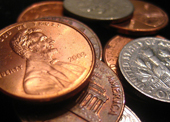The Big Difference a Penny Makes
Should you price a consumer product at a price that ends in 99 cents — or price it at a round dollar amount?
Topics

Image courtesy of Flickr user r-z.
What’s the difference between $9.99 and $10.00? Not much, objectively. There’s little you can buy with a penny these days. But a study by three researchers finds that many restaurant managers believe that price endings such as 99 cents or a round dollar number communicate a significant message to consumers.
Robert M. Schindler, a professor of marketing at the School of Business at Rutgers University-Camden; H.G. Parsa, a professor at the Rosen College of Hospitality Management at the University of Central Florida; and Sandra Naipaul, an assistant professor at the Rosen College of Hospitality Management, surveyed 112 U.S. restaurant managers. The researchers found that a large majority of restaurant managers believe that consumers pay less attention to the right-hand digits in a price and instead pay more attention to the digits to the left of the decimal point. What’s more, the majority of the restaurant managers surveyed believed that consumers associate prices ending in 99 cents with good value. (And, in fact, some previous research has found that using price endings that are just below a round number — such as 99 cents — can lead to increased sales.) Nonetheless, the professors found that almost one-third of the restaurant managers surveyed use “round” price endings (such as $10.00 or $7.50) more often than prices that have “just-below” endings such as 99 cents or 95 cents.
Why is that? Well, 42.9% of all the restaurant managers surveyed — and 82.9% of those who more often used “round” price endings — believe that customers associate prices that end in .00 with high quality. Also, some of the managers who more often use “round” price endings indicated that they saw such rounded prices as more honest or as more conducive to a classy image — or that they simply make price communications, calculations and making change easier. Slightly more than half of the managers in more upscale restaurants responding to the survey (which also included managers of inexpensive, quick-service restaurants) said they used round price endings more often.
Schindler, Parsa and Naipaul’s paper on their research, “Hospitality Managers’ Price-Ending Beliefs: A Survey and Applications,” will be forthcoming in the journal Cornell Hospitality Quarterly, Schindler noted.

Comments (7)
What SaaS Marketers Can Learn About Pricing From Menu Engineers – Marketing Essentials
Pia Elworthy
The magic numbers | abp2fa
Stewart Shriver
Martin Dressler
Robert Voltaire
Indy Datta